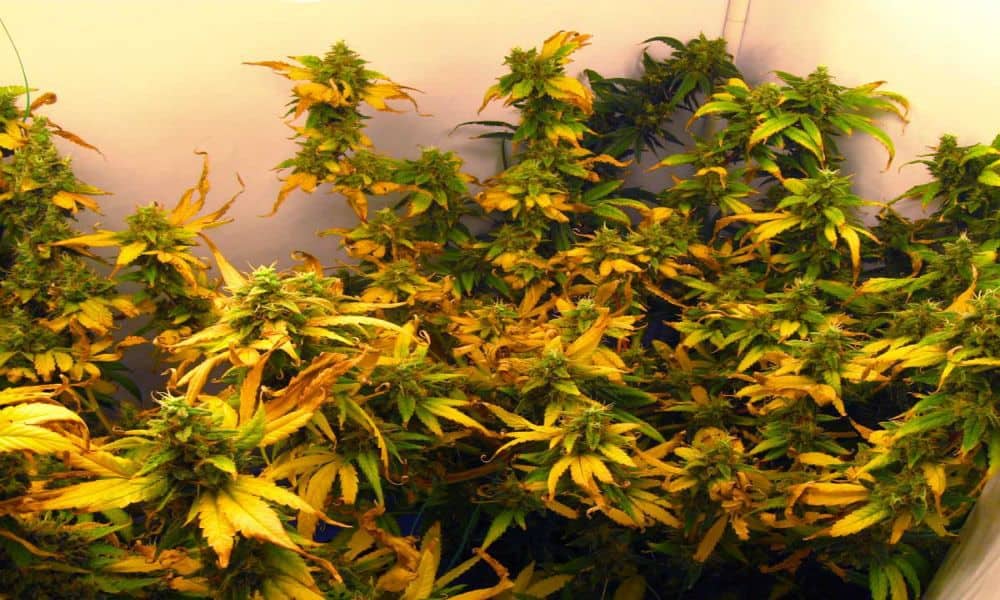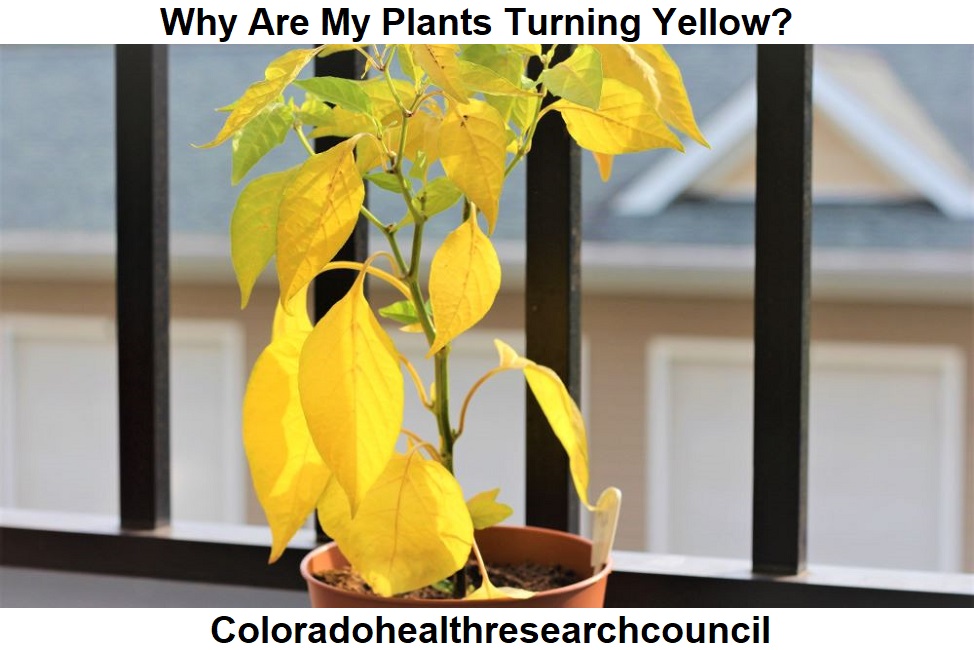It’s better to read this marijuana blog and not need it than to not read it and come undone in the grow room. Sometimes things go wrong in the cannabis garden. Even the best marijuana growers can run into trouble occasionally and yellow leaves are usually the first warning sign.
No grower wants to see yellow leaves. Withering plants in the grow op are a miserable sight. Unfortunately not every cannabis crop grows trouble free. This can be due to incalculable reasons. It can be anything from grower errors to invasive microorganisms. Of course, we cannot provide you with a surefire silver bullet solution for every potential cannabis plant malady. We’re cannabis writers, not clairvoyants.
But we certainly can help you. Specifically to correctly identify most of the common causes for yellow leaves. Moreover, we have included helpful tips to treat ailing plants. Plus simple pro tips and tricks. Any home grower can implement our advice to avoid cannabis plants’ leaves turning yellow. Now let’s get into the specifics.
ACCURATE DIAGNOSIS
The very first step is accurate diagnosis. What is the cause of the yellow leaves spoiling your cannabis plants? Chlorosis in ordinary decent grower terms means loss of chlorophyll. In order to effectively apply treatment, you must know what you’re dealing with. Don’t jump to conclusions. Don’t panic. The leaves on your cannabis plants are like biological solar panels. They are essential to photosynthesis. Removing all the yellow leaves is not recommended surgery, especially for young plants. Correct identification of the source of the problem and swift remedial action can restore marijuana.
Senescence is when plants will naturally yellow off and die. During the final weeks of flowering do not be alarmed. Leaf drop and yellowing always increases. Flushing plants with pure water or a flushing solution at the end of bloom will also rid the medium of residual nutrients and often causes leaves to yellow.
COMMON CAUSES OF YELLOW LEAVES
The following is not a definitive list of the causes for chlorosis. It is such a common symptom, that sick plants display, we could write a book, but not today. That being said, we have focused on the most common causes for yellow leaves based on first hand pro grower experiences. If you are presently troubleshooting for a solution to chlorosis, read the next few sections carefully. Your crop could be riding on it.
UNDER/OVERWATERING
Cannabis plants will only thrive with an effective wet-dry cycle. This means you must water the right amount at the right time, with every watering. So what’s the best way to tell if your marijuana is thirsty? Lift up the containers when they are dry. Then again after watering, so you will know the difference.
Perhaps it’s not possible to easily lift plants? Then you can purchase a humidity meter to insert into the pot. Hydro growers need to ensure pumps, air stones, reservoirs, and timers are set up correctly from the start of the grow. Check twice, and then check again.
PH AND NUTRIENT LOCKOUT
Soil growers have the advantage of cultivating in a medium, that acts as a buffer for roots. Hydroponics and coco are not quite as forgiving to pH imbalances. Even soil growers need to at least come close to getting the ideal pH of 6.0-7.0 and maintain it, otherwise, plants will suffer. 5.5 to 6.5 pH is generally agreed upon as the recommended range for hydro and coco. Yellow leaves can be a warning sign, that you don’t have your notes dialed in and the pH is off.
Essentially when the pH of your nutrient solution strays above or below the particular sweet spot for your substrate, it prevents complete absorption of all the elements of the solution. Roots are starved of certain nutrients and micronutrients as the incorrect pH causes a lockout.
OVER/UNDER-FERTILISATION
A lack of key nutrients will cause cannabis leaves to turn yellow and wilt. Nutrient deficiencies can interrupt cannabis growth and prevent plants from carrying out vital functions. Conversely, too many nutrients can cause nutrient burn, which also results in yellow leaves. Under-fertilization causes leave to turn from green to yellow and eventually collapse, whereas over-fertilization causes leave to become crunchy, vibrant yellow, and curly.
As a key macronutrient for cannabis plants, nitrogen deficiency or burn usually causes these symptoms. Nitrogen deficiency starts by yellowing the edges of leaves before working its way inwards. The central veins of each leaf remain dark green throughout this process. Nitrogen burn, on the other hand, gives rise to toxicity, which manifests as shiny leaves that are much darker green than usual.
LIGHT BURNS AND DEFICIENCIES

Indoor cannabis plants grown under artificial lights must be perfectly positioned and lamps must be in just the right distance above the canopy for best results. When lamps and reflectors are too close to the flowering tops, buds and leaves will be yellow and brown as the light is too intense. This is very much a top down problem.
In contrast, too little light is usually a problem, that is most evident from the bottom up. Light deficiency causes shaded leaves or leaves too far below the light penetration capability of the lamp to yellow and drop off.
ROOT ROT
Yellow leaves are a key sign of root rot, a microbial condition that attacks the root system of plants. When the growing medium becomes too damp from excessive moisture and overwatering, it becomes a breeding ground for fungi, bacteria, and algae. Any of these organisms can begin to attack the roots in these conditions and cause them to start rotting. This leads to yellowing leaves, brown and slimy roots, leaf drop, and an overall droopy and withered look.
WHEN NOT TO WORRY ABOUT YELLOW LEAVES
Sometimes, growers don’t need to worry about yellow leaves. At times, they are merely a natural part of the growing cycle. Cannabis plants often shed older fan leaves (especially at the end of their life), which turn yellow before falling to the ground. During the flowering phase, plants divert most of their energy towards the flowers, which also tends to cause slight yellowing of the leaves.
